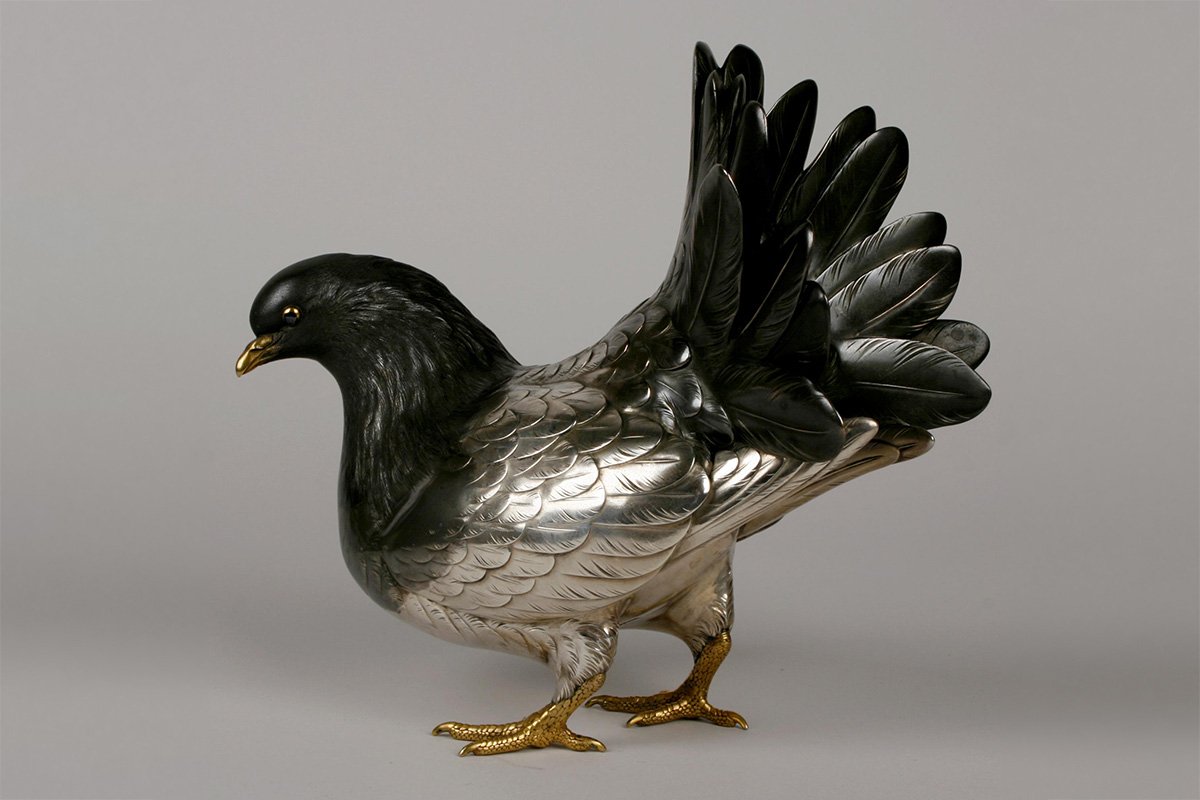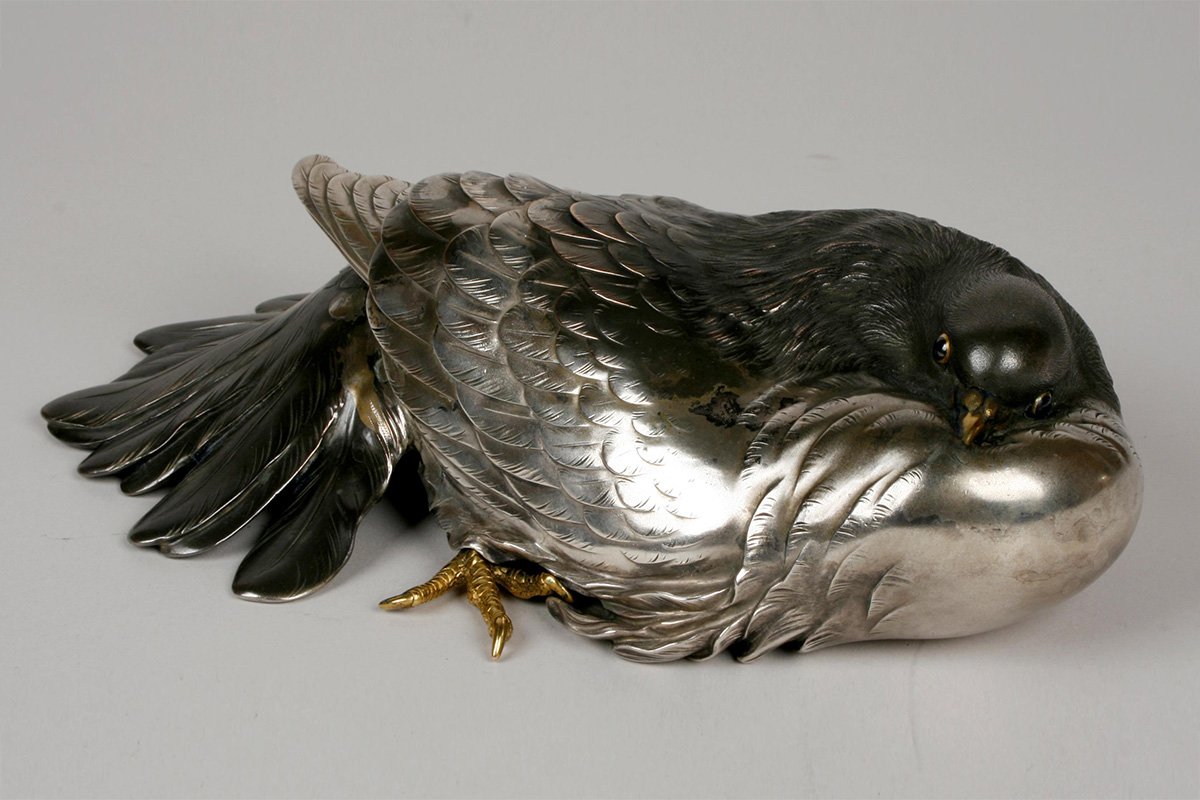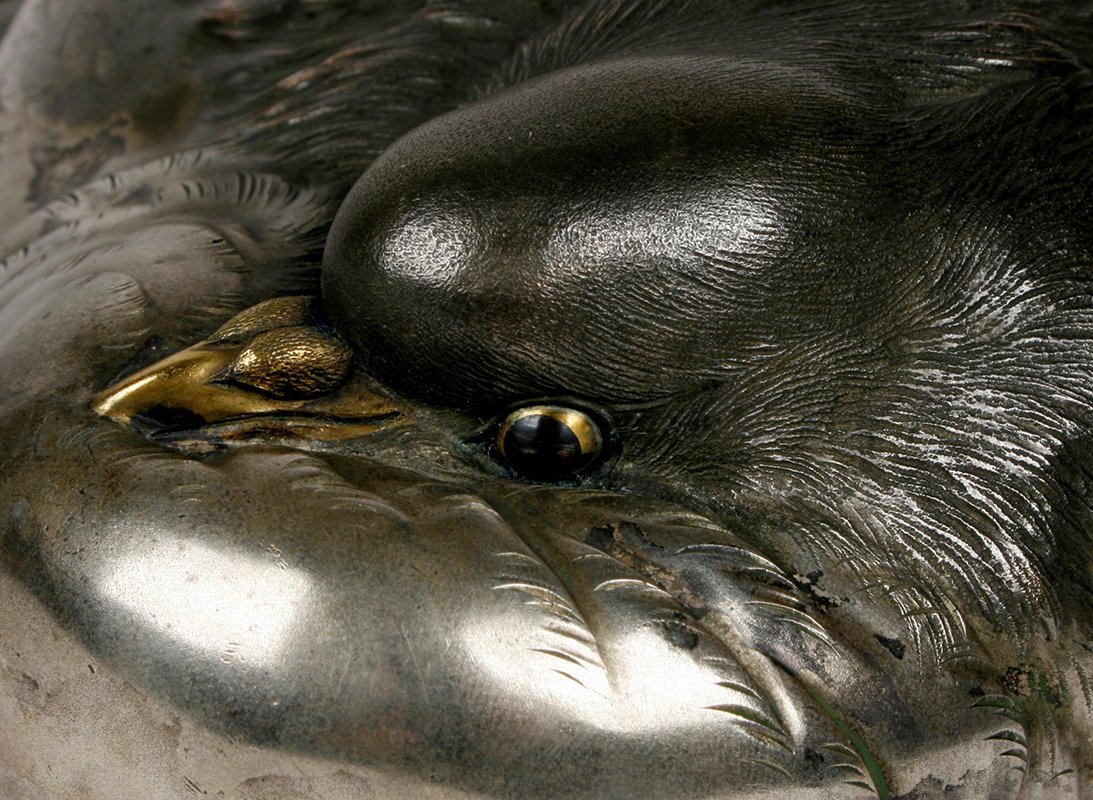MEIJI-TAISHO
OKAZAKI SESSEI, PAIR OF DOVE OKIMONO
Okimono or sculpture in the form of a pair of doves, the male standing guard while his mate nestles with her beak tucked into her wing. Of dual-cast and cold-chiseled shibuichi and silver, the eyes inlaid in shakudo and gold, the beaks and feet gilt. Each signed on the reverse with a cast, seal-form signature by the artist: Sessei (Okazaki Sessei, the go or art name of Okazaki Shojiro, 1854 – 1921). Taisho 5 or 1916.
With the tomobako or original box, inscribed on the exterior of the lid: Gin (to) Oborogin (o) Awasete Chu (su), Sokyu (no) Okimono or Dual-cast Silver (and) Shibuichi Sculpture (in the form of) A Pair of Doves; and on the reverse of the lid dated: Taisho Hinoe-tatsu, Fuyu or Taisho (era) Year of the Dragon (1916), Winter and signed: Sessei Zo or Made by Sessei, and sealed: Sessei.
Born in Yamashiro Province (present-day southern Kyoto Prefecture, Okazaki Sessei studied metal casting under his father, a kettle caster in Osaka. In 1877, he moved to Tokyo to study casting under Suzuki Masayoshi. Afterwards, he began to work independently as a casting artist. The Tokyo School of Fine Art was founded in 1889, and in the following year, Sessei was invited to join the faculty. In 1891, he was promoted to assistant professor, and in 1896, full professor. When the faculty became split and disordered following the resignation of Okakura Tenshin in 1898, he also resigned. Sessei participated in both domestic and international expositions, including the World’s Columbian Exposition held in Chicago in 1893 and the Naikoku Kangyo Hakurankai or National Industrial Expositions (at one of which his work was awarded a prize). He became famous for his large-scale, cast works for public spaces. These include the decorative lion-dogs in Nihonbashi, the statue of Saigo Takamori at Ueno Park, and the statue of Kusanoki Masashige in the square before the Imperial Palace in Tokyo.
Okazaki Sessei suffuses the birds with a quiet yet expressive elegance. Tenderness seems to join the pair, as the female warms her nested eggs. Then a new and difficult technique, the dual-casting of shibuichi and silver softens the border between the light and dark feathers. One metal seems to fade into the other and at points the blending of the metals lightly mottles the surface coloration to suggest the irregular coloration of the plumage. Sculpted with great sensitivity, these doves embody both the naturalism of the age and the striving for painterly effects in metalwork.
Okazaki Sessei, Pair of Dove Okimono
Artist Name: Okazaki Sessei
Period: Meiji Taisho
Mediums: Metalwork
Form: Okimono or Sculpture
Origin Country: Japan
8” high x 8 ¼” wide x 4 ¾”, dimensions of standing male dove; 2 ½” high x 9 ½” wide x 5 ¾” deep, dimensions of reclining female dove
This piece is no longer available.







